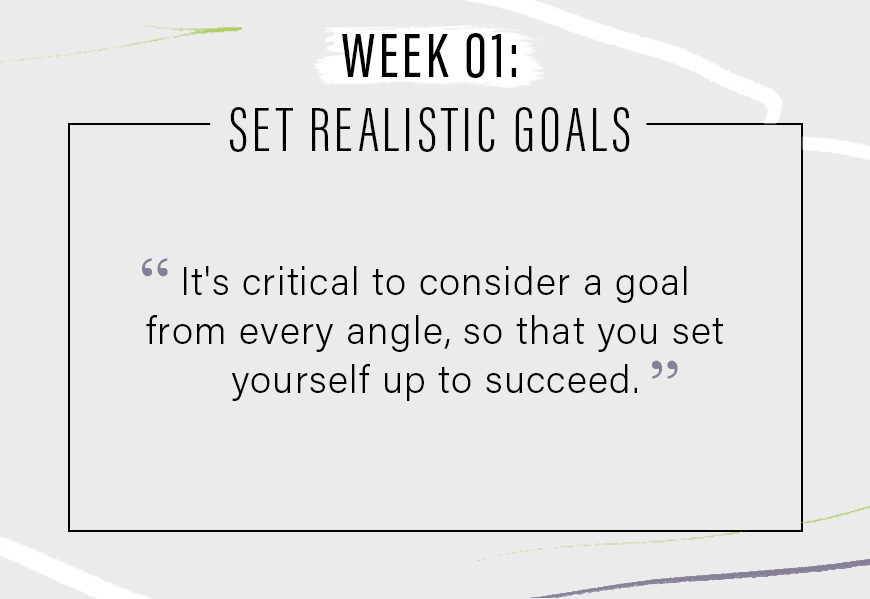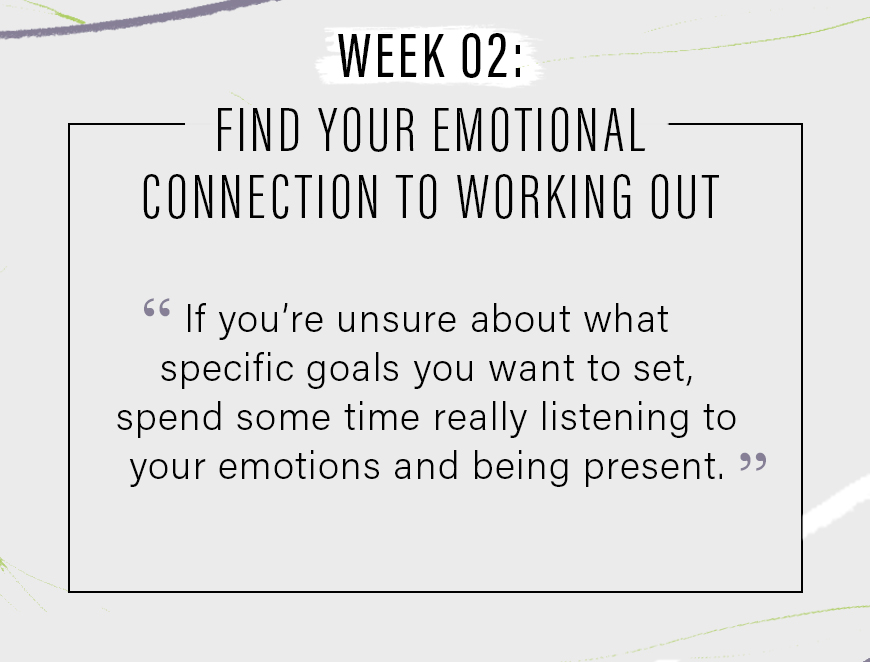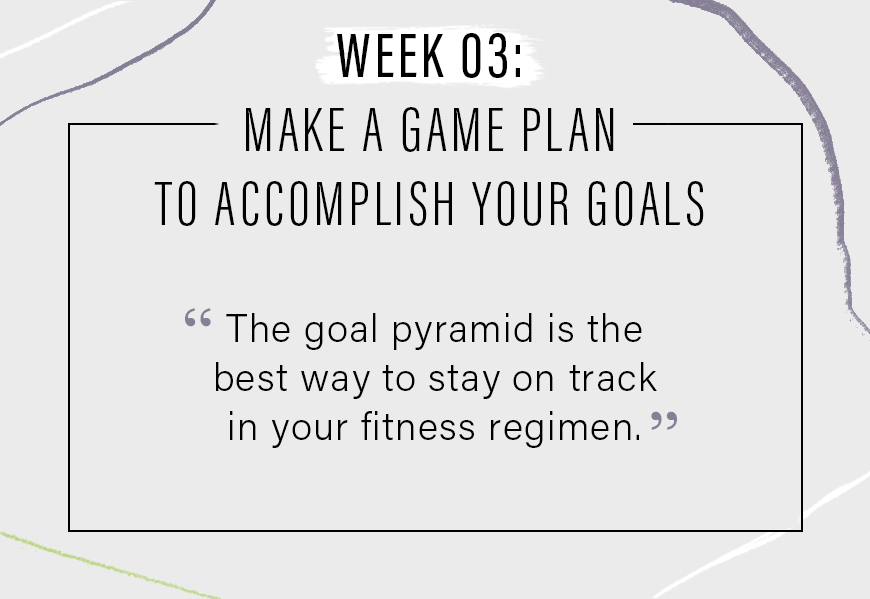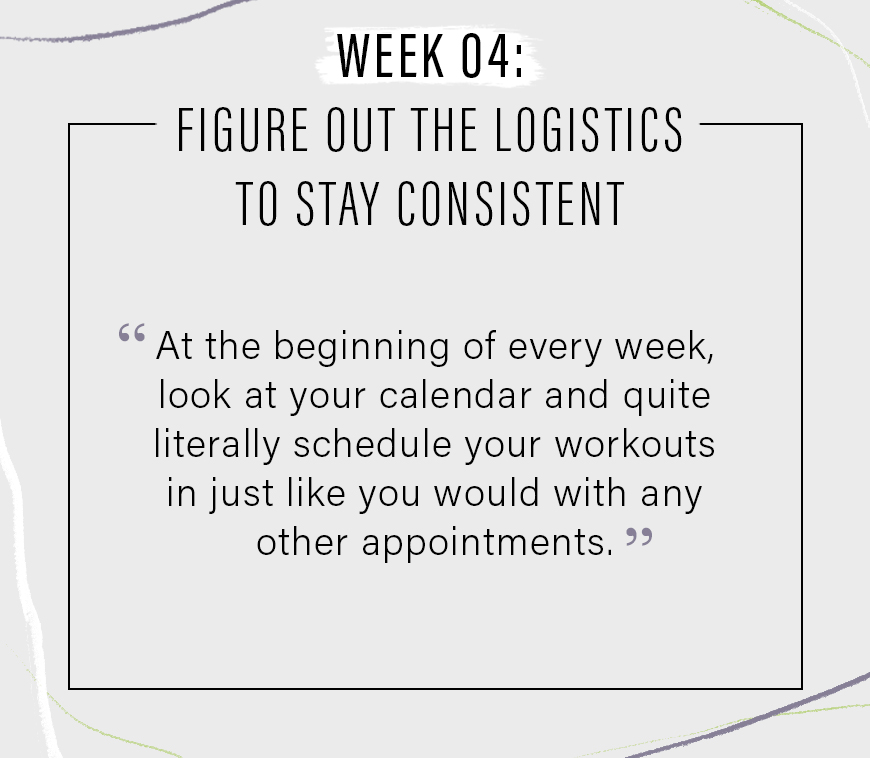Jillian Michaels on How to Set Fitness Goals That You’ll Be Inspired to Crush All. Year. Long.

Jillian Michaels is a fitness pro, creator of the MyFitness App, and author of the brand-new book The 6 Keys. Over the course of the next four weeks, she'll be your guide, helping you to create personalized fitness goals and then figure out how to *crush* them throughout 2019.
Truth be told, any single one of the 365 days in the year is a great time to set new fitness goals, and yet, we choose to make January 1 feel like the metaphorical clean slate. So, if this fresh start has got you feeling motivated, use that inspiration to your advantage and spend the next month focusing on getting fit, feeling strong, and starting your year off right.
Now, I don't have to tell you that there are plenty of reasons to hit the gym (or, the living room, now that digital fitness is the name of the game) in 2019. The benefits are universal, and regardless of how you work out, squeezing in a sweat sesh helps with your brain chemistry and improves your overall health, which over time, will give you more energy, better immunity, and a clearer outlook on what you want to accomplish in the New Year.
More importantly, I strongly believe that the act of doing something for yourself helps to improve your self-worth. As you work to become physically strong, it transcends into emotional strength; you'll learn to push yourself to go harder, farther, and for longer than you did the previous day. Every day that you show up for your workout, you're telling yourself: "I am worth this, and I’m capable of achieving it."

{{post.sponsorText}}
So, regardless of where you are in terms of fitness experience—gearing up to compete in an Ironman or pump some iron for the first time in a long time—right now is the perfect time to set some new goals for yourself and reach that next level. To help you do this, I've created a four-week plan to make that happen. Let's get to work.

Week 1: Set realistic goals
In order to set attainable goals, you have to take into account your resources (for example: available time, money, and access to equipment and other necessary tools) as well as your personal interests and dislikes. Your goals need to be definable, realistic, and important to you—because if they’re not, you won’t be passionate about them, and then you’re lost from the beginning. It's critical to consider a goal from every angle, so that you set yourself up to succeed. For example, if you've always wanted to train for a 10K but hate the freezing cold, you might want to table that goal for the time being, and pick a warmer-weather race to train for instead. That way, when a snow day happens, you won't feel defeated and discouraged by not being able to log your miles.
Now, there are many different kinds of goals—like running that 10K to clear your mind, doing your record number of push-ups to feel strong, or lowering your heart rate to benefit your overall health—but in order to make a fitness plan stick, it's vital to hone in on the "why" behind the workout. If you're feeling a little overwhelmed, check back on Monday for my top tips to help set you on a path toward conquering any fitness goal.

Week 2: Find your emotional connection to working out
The idea isn't to have an emotional connection to working out, but rather to find an emotional connection to the outcome of working out. Inspiration can come from any outside source, but lasting motivation—or the desire to do something so badly, you're willing to do whatever it takes—comes from within. If you’re unsure about what specific goals you want to set, spend some time really listening to your emotions and being present. This allows you to identify the things that are important to you.
It's unconventional, but a good way to do this is to set an alarm to go off at the top of every waking hour for two weeks. When you hear the buzzer, ask yourself: "What am I doing right now, and how does it make me feel?" This is an easy exercise to get in touch with your feelings, which, as we know, are thought-formers. Then, do the same exercise while you're working out. When you check in with yourself, if you're thinking: "I hate this, I dread this," maybe it's not the best workout for you. If you're thinking: "This is convenient and I love it," then you've found something that works. So, try different things and see how they make you feel before setting a goal to feel good about.
If you're looking for a new workout to try, check back on January 14 for a seven-minute full-body workout from me.

Week 3: Make a game plan to accomplish your goals
The goal pyramid is the best way to stay on track in your fitness regimen. You put your ultimate goal (and the reason behind it) at the top of the pyramid, then break it down into monthly, weekly, and daily challenges. This helps to keep big change from feeling overwhelming. Working backward from your ultimate goal, create a monthly outlook, a weekly list of things that must be accomplished to hit the monthly goal, and the immediate tasks to facilitate the weekly to-do list. (When we get to Week 3, I'll help you make your own goal pyramid, so be sure to check back here.)
Of course, I recommend some ground rules for reaching said goals: Don't work out more than six hours a week—unless you're training for a marathon or an Ironman or doing low-intensity endurance training—and stick to no fewer than four 20-minute sessions a week. If you can't commit to more than those four, 20-minute sessions and you're not seeing the results you want, that's okay. Simply re-adjust your timeframe, make sure that the other aspects of your life are also supporting these goals (proper nutrition and sleep, etc.) and keep your eyes on the prize.

Week 4: Figure out the logistics to stay consistent
Stream an app to your TV or pop in a DVD so that you can just bang out 20 minutes in your living room. The app I created, My Fitness, is designed to do this for you by customizing your workouts and making them accessible to you on any device. Then, once you’ve got your workouts built into your schedule, look at what the other obstacles might be. Is it a lack of equipment? Find a workout that doesn’t require equipment. Is it time or access? Find a workout you can do at home. At the bare minimum, just try to get those four 20-minute workouts scheduled. And always, always keep your gym bag in your car or at your office—that way, if you do have a few minutes of surprise spare time to lend to a workout, you’ll be ready to go anytime, anywhere.
If you're feeling inspired to dive even deeper into how to make real, lasting change in 2019, check out our ReNew Year program for endless inspo.
Loading More Posts...